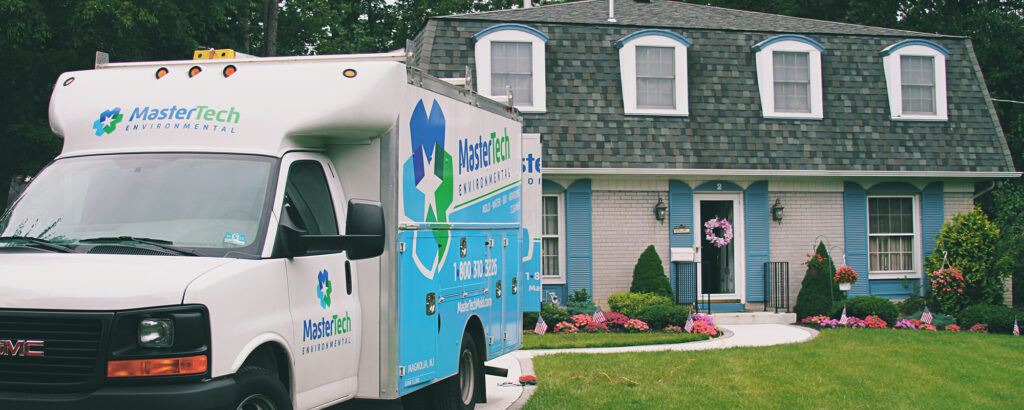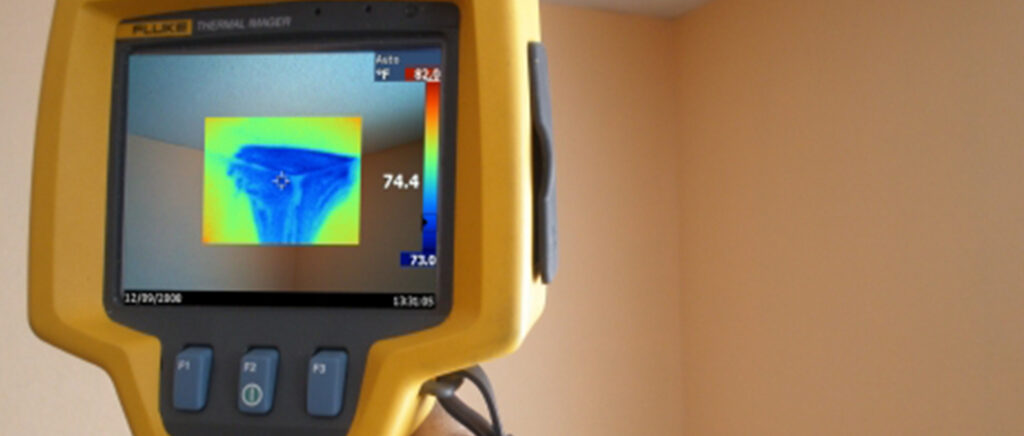All mold needs to thrive is an adequate moisture source, dead organic matter, and warm temperatures. The nature of mold allows it to grow on and spread to virtually any surface in your home. In some situations, an indoor mold problem is quite obvious and hard to miss. However, that is not always the case. We see a lot of scenarios where mold begins to develop in wall voids, under building materials or in non-living spaces (i.e.: basements, attic or crawl spaces), and the property owner has no idea of the problem. Tiny mold spores can settle into small, damp crevices without notice, and before you know it, you can have a full blown mold contamination. That is why it is important to learn how to identify signs that could be pointing to a mold or moisture problem.
Pay attention to the symptoms of an underlying mold and moisture problem. Early detection is key.
Keys Signs of Indoor Mold Growth in Virginia
When it comes to dealing with mold development in your Virginia home or business, early detection can make all the difference. Given enough time, unaddressed mold and moisture will leave you with serious property damage and put you at risk for potential health implications. It only takes 24-48 hours for mold to develop once moisture is introduced to the environment. If you pay attention to the warning signs of mold growth and take immediate action upon the detection of mold, you can save yourself a great deal of stress and money down the road.
Visible Signs of Mold Tidewater Region VA
- Mold growth can be black, white, grey, brown or green in color.
- It can be powdery in texture or appear in small splotches.
- Often times, mold will be accompanied by suspicious staining or discoloration.
- Basements, attics, and crawl spaces are commonly damp environments and tend to be vulnerable to mold development.
- Homeowners should make it a habit of regularly assessing all areas of the home (including the basement, attic, and crawl space) for any visual indicators of mold growth.
- If you see suspicious growths or unexplained staining/discoloration in your home or business, contact a professional mold inspector to have your home properly inspected.
“Musty” Odors in Virginia Home of Business
- If mold is developing in a hidden space (i.e: wall voids, under carpet, behind wallpaper, above ceiling tiles, etc.), there may not be any visual indicators of mold growth.
- Mold releases a pungent, earthy odor that can be rather off-putting. You should take action immediately upon detection of the odor.
- Odors can permeate through flooring and walls, so be sure to check for signs of water damage in all adjacent areas/rooms.
- During your investigation, DO NOT open up walls, peel up wallpaper, or rip of carpeting without proper containment. You may risk disrupting the mold spores and cause cross-contamination to clean, unaffected areas.
- If you smell musty odors from an area with a history of moisture problems, call a mold professional who will have the necessary tools and experience to help. Even if there are no visual signs of mold, there could be extensive hidden mold growth that should be handled by a trained professional.
Unexplained Allergies in Virginia
- The presence of mold can be determined by any unexplained health symptoms.
- Depending on the individuals living in the home, mold exposure can manifest several symptoms:
- Allergy symptoms–sneezing, runny/stuffy nose, coughing, itchy eyes, etc.
- Asthmatic symptoms–coughing, wheezing, shortness of breath
- Irritant reactions– rashes, itchiness, swelling (similar to allergies)
- Symptoms can range from very mild to very severe. And you might notice that you will start to feel better if you are out of your home for a while.
- If you and your family feel sick in your home and cannot explain the cause, it could be the symptoms of mold exposure.
- To be certain, contact a mold professional to conduct a comprehensive mold inspection with mold testing.
History of Moisture Issues VA
- There needs to be an adequate moisture source in order for mold to colonize and spread. Signs of water damage can be the first indicator of mold development.
- Mold does not always require a major leak or flooding to develop. In fact, humidity or condensation can be plenty of moisture to encourage mold growth.
- Moisture problems should be addressed immediately to avoid severe mold development.
- Water should be extracted, and the area should be thoroughly and properly dried out.
- Humid rooms should be well ventilated to encourage constant air circulation.
- If you know of areas in your home that have suffered from water issues and you are detecting potential signs of mold activity, contact a mold removal professional in Virginia to quickly and safely handle the mold.
Once you know that your home has a mold problem, don’t wait. Hire a reputable mold removal company that can safely and efficiently restore your proper and your family’s peace of mind. Be proactive in preventing mold growth in your home with moisture control tactics. In order to spot mold early in its development, take the time to routinely check your home for potential signs of mold growth.


